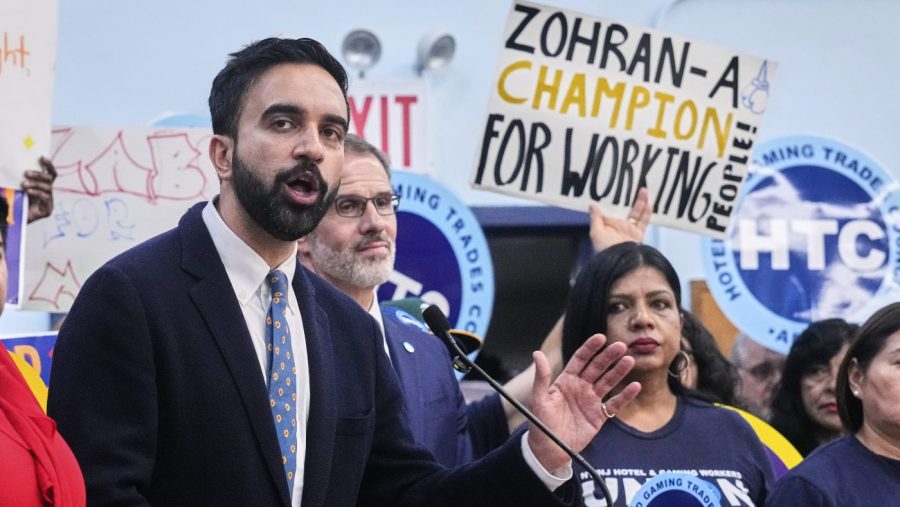Mamdani and the Democrats have a problem with the working class

Zohran Mamdani’s recent victory over Andrew Cuomo is impressive: the democratic socialist ran a strong campaign and leapt from virtual anonymity to widespread name recognition in a matter of mere weeks.
It is surprising, however, that so many have uncritically accepted Mamdani’s claim that he is the champion of the working class.
In a June 26 New York Times post-election profile, Mamdani said his campaign was targeted toward “those who cannot feed themselves and their families.” He celebrated the theme of “affordability” and low-income-friendly policies such as free buses, free child care and rent freezes. Mamdani summarized the election as a “victory with working-class communities of color.”
This rhetoric ignores an inconvenient fact: Mamdani lost lower-income voters and Black voters to Cuomo by significant margins: 49 percent to 38 percent, and 51 percent to 34 percent, respectively. In fact, those were the only two groups Mamdani lost.
Mamdani was extremely successful with New York’s middle class. However, though he claims to represent the interests of the working class and least well-off, he did not actually win their votes. Instead, he won his largest vote share among what many would consider the opposite of the working class: those “in gentrifying neighborhoods like Ridgewood in Queens and Greenpoint in Brooklyn that are home to groups of young, left-leaning voters.”
The Mamdani coalition is right to celebrate its come-from-behind victory. But once the dust settles, a question should trouble them: Why did Cuomo beat Mamdani among exactly the people Mamdani claimed he was running for — whom he was ostensibly best-poised to win?
Strategists might argue that lower-income voters were influenced by Cuomo’s union endorsements, TV ad blitz, and name recognition. They might also point to Mamdani’s success with South Asian neighborhoods, many of which are working-class. These are fair responses, but they do not erase the fact that Mamdani lost the working class overall. Furthermore, it is difficult to believe that 62 percent of lower-income voters and 66 percent of Black voters completely lacked exposure to Mamdani’s proposals during such a high-profile race.
It would be insulting — and wrong — for the Mamdani coalition to imply that lower-income voters and Black voters did not know their best interests. The Mamdani team should instead consider the possibility that something Cuomo was selling was more compelling to these voters than Mamdani’s promises of free buses and frozen rent.
Democrats should ask whether candidates who make big promises of free stuff resonate less with lower-income voters than candidates who are perceived to have management or business experience and who focus on assuring physical safety.
A mid-June Manhattan Institute survey found that “voters who prioritize crime overwhelmingly break Cuomo’s way.” Indeed, more than seven times (36 percent) as many Cuomo supporters rated public safety as their top issue compared to supporters of Mamdani (5 percent). Perhaps Democrats should ask whether there is something that rings as out of touch about candidates who claim to be working-class champions yet come from elite leftist academic households. Or perhaps, most simply, the least well-off are skeptical of idealism and believe moderation is more likely to address their economic and security needs.
Currently, there is no public reckoning by Mamdani’s campaign about his underperformance among lower-income voters. He should be telling the working class directly that he is going to learn how to better understand their needs and win their votes. But Mamdani is not doing that, likely because his main self-identified political identity is that he is already a champion of the working class. It is politically easier to assume their votes are secured and to pivot to the general election.
The gap between the narrative of Mamdani’s victory and the electoral reality connects to a broader problem within Democratic politics: Democrats claim to represent working-class communities even as they hemorrhage working-class voters.
In the 2024 election, President Trump improved his performance with the working class by 18 points, even as his overall margin and his margin among higher-income voters improved by only 6 percentage points. Genuine shifts in lower-income voter preference drove Trump’s victory. If Democrats summarily conclude that Mamdani is the blueprint for winning back the working class, they do so at their own peril. This primary election is yet another data point that current progressive policies do not necessarily translate to working-class support.
It is premature to declare Mamdani a working-class champion — and the rush to do so is evidence that the Democratic Party’s impulses die hard. Democrats, and particularly progressives, need to confront the disconnect between how they see the working class and how the working class sees them — otherwise, they’ll continue to lose the working class.
Abe Baker-Butler has served as a Westchester County, N.Y., Democratic committeeman and as an organizer on multiple county and federal campaigns in New York. He is the founder of FroshVote. Ely Altman is an alumnus of the Hudson Institute Political Studies Program and the Brady-Johnson Program in Grand Strategy. Both are 2025 graduates of Yale University.